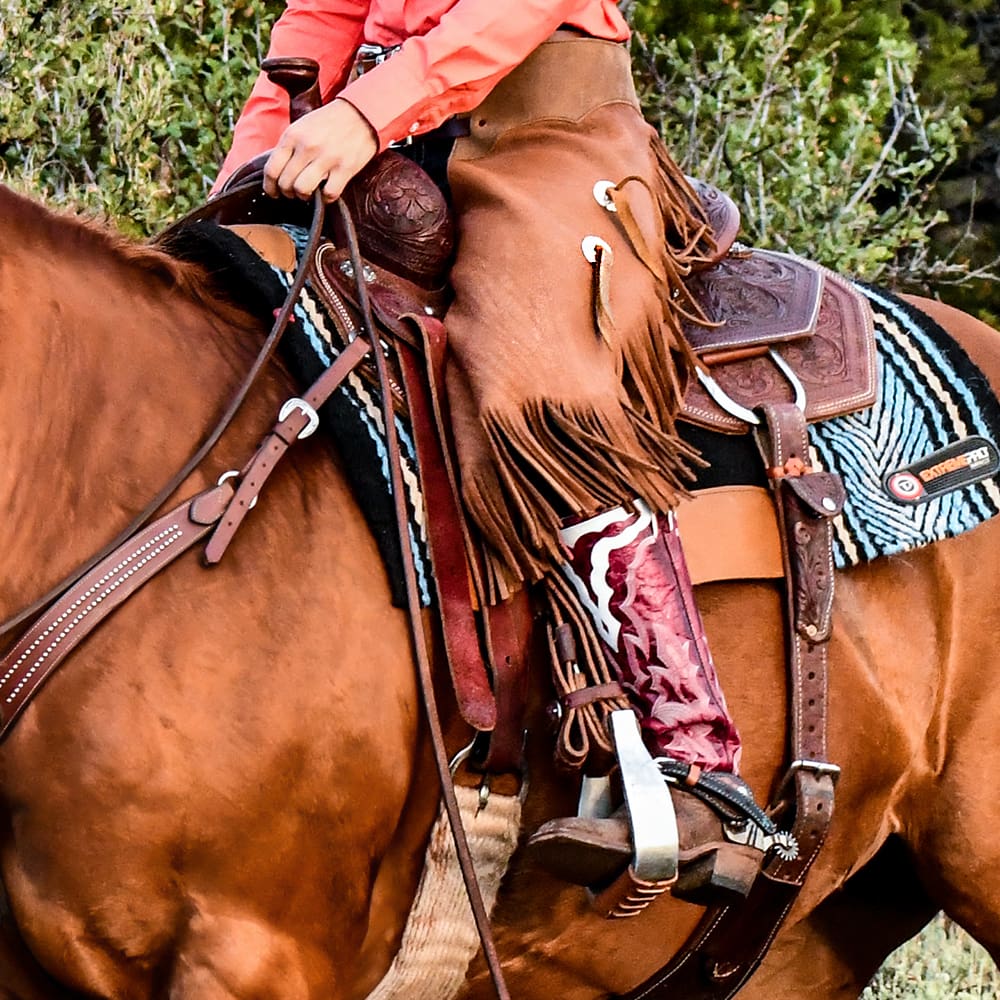Let's look at your rationale:
1 - "
SAFETY! To help prevent your foot from going through the stirrup and becoming stuck." Bogus. If a horse explodes, all bets are off. When you are falling or being throw off, you will not be able to have heels down. Heels down gets tossed out a split second before the rider does! The way to prevent your foot from going thru the stirrup is a proper size of stirrup and/or a good boot. I will note that people riding aggressively (polo, roping, barrel racing, etc) typically use the "home" foot position rather than relying on heels down.
Accidents with horses happen. You do everything you can to have the best outcome possible. Having your heels down helps you grip with your whole leg and seat and use your driving forward aids to help maintain control of yourself and your mount. Should you become unseated, having your heels down helps your foot slide out of the stirrup better. Doesn't mean that your foot will come out, but it's an excellent practice.
2 - "
Toes in, heels down helps you develop and maintain an independent seat." Bogus again. It has nothing to do with an independent seat. An independent seat allows you to stay on and stay balanced without using the reins, etc for balance. This is an example of an independent seat taken to an extreme:
This is in my opinion, not an example of a rider with an independent seat. She's gripping the saddle horn, gripping with her knees.
Toes in is arguable a FAULT. The US Cavalry and George Morris were both right: Let the toe go out 10-45 degrees based on your body, your horse and your saddle. What is certain is that a great many people riding in much more challenging situations than "The Spanish Riding School" let their toes go out - and still have a secure and "independent" seat!
I am not a fan of GM, I feel he is abusive to his students. And having had the immense pleasure of working with a Master from the Spanish Riding school--sometimes the toes are out whilst giving an aid but return to the forward position.
3 - "
And lastly, the introduction of the spur." Again, incompatible with the real world. Lots of western riders, using pretty aggressive spurs, ride with heels level and toes out - without an issue. And many of us can cheerfully ride the rest of our lives without spurs. Spurs have a place but most recreational riders should never need them.
Maybe incompatible with your version of "real world" but for some people, having a quiet and steady lower leg is everything. Agreed, recreational riders need not concern themselves with spurs.
======================================================
Historically, "heels down" was NOT dressage based, but rooted in the Forward Seat. It was taught like this:
Ok....dressage is cavalry based so ipso facto...
"
...For the beginner, it is well to have the stirrups a little on the long side, rather than too short, as this permits, and almost forces the rider to work the thighs and knees well down around the horse, and thus overcome the usual instinctive tendency to raise the knees, which makes the seat unstable and weakens the grip of the knee and calves. It is the ability to grip with the calves of the legs, and to a much lesser extent with the knees and thighs, that provides the strength of seat through which a good rider stays with his horse when difficulties, such as shying, plunging, stumbling, bucking or jumping arise....The importance of keeping the heels down cannot be too greatly emphasized. It produces the strength and stability of the whole seat. With heels thus placed, the calf muscles can be powerfully contracted when it is desired to grip the horse, either to drive him forward, or to keep the seat when balance has been disturbed from any cause. With the toes lower than the heels, it is physically impossible to contract the calf muscles and grip tightly, Also, the lower legs should continuously rest against the horse's sides. With properly adjusted stirrups, and the heels forced down as far as they will go, the calves of the legs just below the knees are forced against the horse automatically."
As fond as I am of US Cavalry teaching, this simply doesn't hold up. After 7 years on spinning, bolting Mia, I can state heels down (or not) doesn't affect the ability to grip or drive with the lower leg. I firmly believe security should be found in the lower leg but I know from hard experience that heels down doesn't do what the cavalry said it would.
Are you sure your heels were down? How did you know? This is a good example of why having eyes on the ground with an experienced instructor is so valuable, you may have had a different outcome. Why do you think the US Cavalry taught this?
If you look at photos of western cowboys and ranchers, you'll see SOME have heels down and just as many - or more - do not. Some may have toes in but a great many have toes out. Plenty of them use spurs with toes out and heels level and do so without gouging the horse.
I have no experience in western/ranch riding.
All riding theory needs to be examined against what happens in the real world on horses rather than what judges like to see in shows. In the real world, people can have outstanding seats while riding with toes out, heels level and feet in the home position. They can also ride great with toes front, heels down and the stirrup on the ball of the foot. Hard not to conclude BOTH work just fine!
The last thing we should be concerned about is what judges think at shows (showing/competition). Our primary concern should be riding in a manner that is safe, best for the horse and enjoyable to both (horse/rider).
I was under the impression no one told you the reason behind "heels down". In my attempt to do so, you responded with a complete dismissal of a long practiced riding technique. You may hold a different opinion than a lot of others but that doesn't mean it's bogus. I'm completely ignorant of western riding and would never presume to claim that their methods are bogus. Especially coming from my complete lack of training and knowledge in that discipline.
















